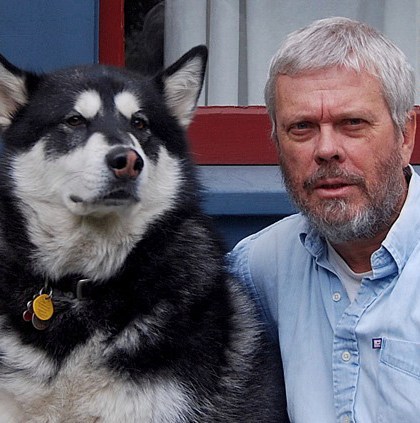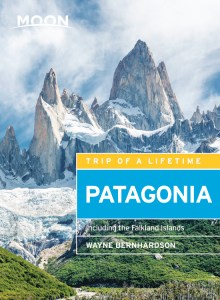Environmental Issues in Argentina
Like other countries, Argentina suffers from environmental degradation, though not all indicators are negative. Aging diesel buses may be the primary culprit in deteriorating urban air quality, but private vehicles (some still using leaded gasoline) and taxis contribute more than their share (some taxis and private vehicles, though, burn natural gas). Superannuated factories, with their subsidized smokestacks, are another source.

A different sort of air pollution is the deterioration of the antarctic ozone layer, which has exposed both humans and livestock in far southern Argentina to ultraviolet radiation in summer. Though ozone depletion is a global problem over which Argentines have little control, they suffer the consequences of the growing ozone hole.
Just as motor vehicles cause urban air pollution, they also produce most of its noise pollution, due partly to inadequate mufflers. According to one study, vehicular noise accounts for 80 percent of noise levels that, at corners like Rivadavia and Callao in Buenos Aires, exceed 80 decibels. Buses and motorcycles are the worst offenders.
Drinking water is normally potable, but a historical legacy of polluted waterways derives from, first, the proliferation of European livestock on the pampas, followed by the processing of hides and livestock, and then by heavy industry. The textbook case is Buenos Aires’s Riachuelo, in the working-class barrio of La Boca, which more closely resembles sludge than water; its bottom sediments, thanks to chemical runoff from factories here and in nearby Avellaneda, are an even greater toxic hazard. The construction of riverside pulp plants in Uruguay continues to be a hot-button issue in Entre Ríos Province, but this is a complex issue characterized by much cynical posturing on the Argentine side.
In the provinces, mining is also a factor; near the town of Esquel, Chubut Province, vociferous opposition caused abandonment of a Canadian project that would have used cyanide, which could have found its way into streams and aquifers, to extract gold from local ores. In San Juan Province, Canada’s Barrick Gold is promoting a binational project that could mean the destruction of several glaciers on the Chilean side of the border and pollution of downstream irrigation water.
Other Environmental Issues
Solid Waste
Buenos Aires and other cities produce prodigious amounts of garbage—Buenos Aires alone, for instance, generates 5,000 tons of solid waste per day. The capital ships its garbage as far away as the city of Olavarría, 400 kilometers to the southwest, but a new law stipulates that it will reduce the waste sent to landfills by half by 2012, and by 75 percent by 2017.
Sidewalk pickups take place daily, but in the aftermath of the 2002 economic crisis, garbage-strewn streets became more common because of spontaneous recycling by cartoneros who ripped open plastic bags in search of reusable materials like cardboard. There’s another dark side to this recycling, as some cartoneros—apparently in league with criminal elements—have also absconded with valuable metals covering utility boxes and other similar objects accessible from the street. Sold and melted into ingots of bronze and other metals, these are almost untraceable.
Another sort of solid waste is even more problematic. Greenpeace Argentina has protested an agreement with Australia to import that country’s nuclear waste for reprocessing near the Buenos Aires suburb of Ezeiza. Argentina’s constitution prohibits storage of nuclear waste, though Argentina has its own 357-megawatt Atucha I reactor near the town of Lima, northwest of the capital.
Newsletter Signup
By clicking ‘Sign Up,’ I acknowledge that I have read and agree to Hachette Book Group’s Privacy Policy and Terms of Use
Energy
Mismanagement and disinvestment are threatening Argentina’s self-sufficiency in fossil fuels, so that the country is now having to import natural gas, at above-market prices, from Bolivia. The country does have hydroelectric resources in the subtropical north and along the Andean foothills, but Argentine governments have promoted nuclear power since the 1950s. While the country has renounced any intention to build nuclear weapons, the 357-megawatt Atucha I reactor has powered the capital’s electrical grid since 1974. For much of the time since then it has operated at reduced capacity thanks partly to cheaper hydroelectricity, but also due to inadequate maintenance; the controlling Comisión Nacional de Energía Atómica (CNEA, National Atomic Energy Commission) is not known for its transparency. Atucha I is due to close in 2014.
Even hydroelectricity is no panacea, as the creation of the massive Yacyretá dam along the Paraguayan border in Corrientes Province may be raising water levels in the Iberá marshlands; this could sever the “floating islands,” on which their wildlife depends, from their anchoring soils. Similarly, upstream water diversions on the Río Iguazú could affect the flow over the spectacular falls that are one of the continent’s greatest natural features.
Soil Conservation and Deforestation
Centuries of livestock impacts, both grazing and trampling, have caused serious erosion even in areas where there were never native forests, such as the pampas and the Patagonian steppes. Even today, some forested national parks—most notably Lanín and Los Glaciares—have been unable to eliminate grazing within their boundaries. There has been pressure to create presumably sustainable forest-exploitation projects in the Magellanic woodlands of Tierra del Fuego.
The hot-button forest issues, though, are in the northern subtropical forests. In Misiones Province, agricultural colonists and commercial tea and yerba mate plantations have cut over much of the selva misionera, a diverse, wildlife-rich rain forest that cannot easily reestablish itself when its natural recycling mechanisms are disturbed. In Jujuy and Salta Provinces, the yungas cloud forest on the edge of the Andes has already suffered deforestation from construction of a nearly pointless natural gas pipeline over the Andes to Chile, and from widespread clear-cutting to extract just a few prize timber species.
Patagonia’s staggering landscapes, titanic glaciers, and rugged mountains evoke mystery and inspire self-discovery. Explore the ends of the earth with Moon Patagonia.
Newsletter Signup
By clicking ‘Sign Up,’ I acknowledge that I have read and agree to Hachette Book Group’s Privacy Policy and Terms of Use
Pin it for Later


